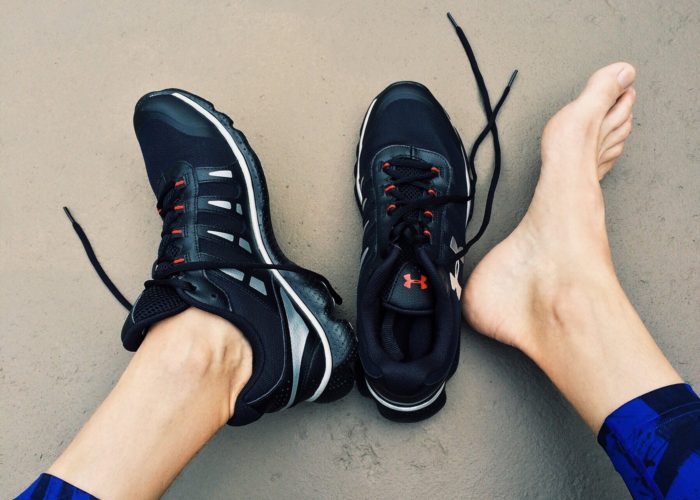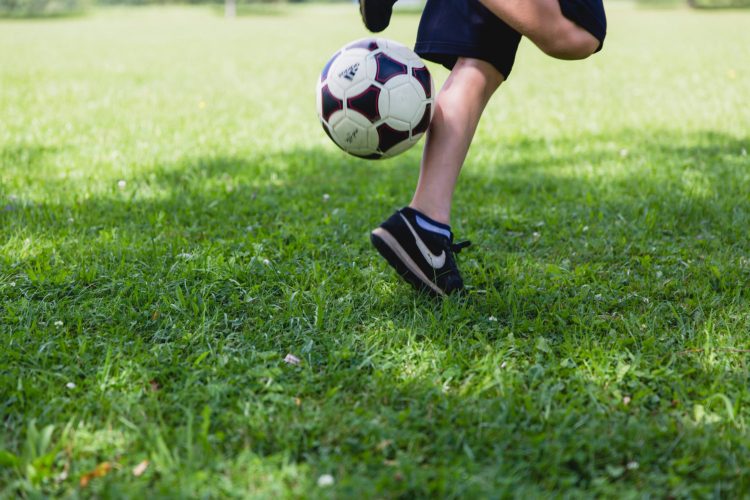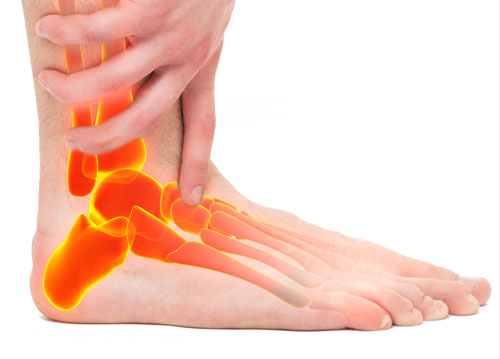When talking about the ankle joint it’s hard not to include the foot alongside the limb that sits on top of it. These two complex systems of bones, ligaments, and muscles work together to give a stable platform when contacting the ground. They also work as a type of spring to facilitate the ability to generate explosive force whilst moving. For the ankle and foot complex to function optimally the sensorimotor system has to be extremely responsive.
Ankle and Foot Structure
We’re going to talk about the importance of the ankle and foot function, and how this relates to injuries, but first we’ll give you a quick overview of how these structures work:
The ankle is made up of three joints, these are between the bones at the base of the lower leg (tibia and fibula), the heel (calcaneus) and the main ankle bone (talus). The foot has many joints, it comprises of two upper rows of bones (tarsal bones) and three lower rows (metatarsal and phalanges) which allow it to be very malleable. The ankle joint is designed to be very stable in full weight bearing, so much so that the ligaments become relaxed in this position. However, when going into plantarflexion (standing on your toes) the ankle is in its least stable position, it’s in this position that most ankle injuries occur.


A Stable Ankle
When walking or jogging at a slow speed the ankle stays in a stable position, this allows movement to occur with minimal energy expenditure. To allow this movement to occur the big toe needs to be flexible enough to bend into extension, this allows it to push off the ground in the final stage of the gait cycle. When this happens it creates a stiffness in the foot and generates elastic energy via the Achilles tendon, this again decreases the amount of energy expended. A restriction in this system is that it will increase the amount of stress going through the complex, this leaves a vulnerability to injury higher up the chain.
A Moving Ankle
Running puts additional stresses (2-3 times body weight) through the lower body, this means the strength and activation timing of the muscles in the lower leg and foot is very important. When running, the stability of the foot and ankle comes from an isometric contraction of the surrounding muscles prior to contact with the ground, this creates a stiff foot and ankle in preparation for contact with the ground. The increase in tension of the tendons on contact with the ground creates a spring-type of mechanism, this maximises the economy of running. Multi-directional sports and activities require the ankle to adapt quickly to sudden changes in direction, for which it needs optimal strength and mobility. The sensorimotor system needs to be extremely responsive to cope with these demands, orchestrating multiple movements between muscle groups at high speeds.


A Disrupted Ankle
When you injure your foot and ankle complex, this can have a negative long term affect on the whole system. One of the biggest consequences is a loss of ankle movement, this will alter your gait which can result in more force going through the lower body. Another big one is the disruption an injury has to the sensorimotor system. It affects muscle activation timing, causing a disruption to the ankles ability to weight-bear efficiently. This will leave you at a higher risk of re-injuring the area, and impair your sports performance.
At Optimal Movement we aim to get your injury fully recovered, so you can enjoy your sports and activities again. But even better, you are less likely to get reoccurring injuries in the future, and we often see individuals performances peak once they’ve got back into the swing of things following an injury.
So if you recently sustained an ankle injury, or perhaps suffer with a long standing injury that’s not getting better, please get in touch. We will guide you through the treatment and rehabilitation process from start to finish.
